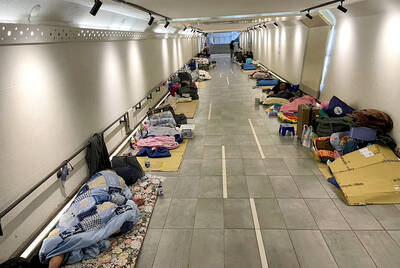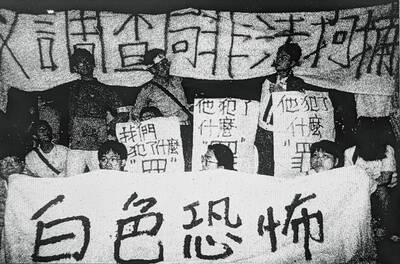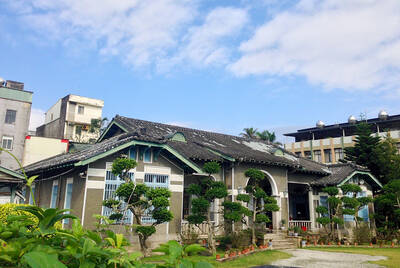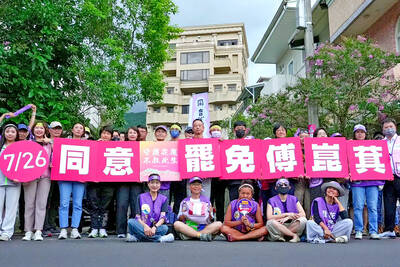A CAMERA WITH A GPS SENSOR AND AN ETHERNET PORT
Nikon’s unique Coolpix P6000 point-and-shoot camera has a few odd tricks up its sleeve. Globetrotters will enjoy the P6000’s built-in Global Positioning System sensor for geo-tagging — or adding geographical information to photos — and Luddites will love the camera’s built-in Ethernet port.
While most camera makers use Bluetooth or Wi-Fi for uploading images to Web sites, Nikon has added a full-size Ethernet port that allows you to plug the camera right into the Internet. The P6000 uploads images whenever it is connected. While that may seem odd, the feature could come in handy in cybercafes or hotels where Wi-Fi is not available.
The GPS feature adds geographical data to every photo, but it can be turned off to conserve battery life.
The camera has a 4x optical zoom lens and a 13.5-megapixel sensor. It takes photos in JPEG or RAW format. At 241g, it is a bit heavier than the average point-and-shoot camera, and it is made of magnesium alloy for ruggedness. It supports light sensitivity up to ISO 6400 and accepts SD and SDHC storage cards. The camera also includes 48 megabytes of built-in storage.
A GREEN PC THAT’S EASIER ON THE ELECTRIC BILL. THE BAMBOO CASE IS OPTIONAL
Those of us who pay lip service to green living can now be more genuinely PC — with the Dell Studio Hybrid PC, a fashionably curvy computer with special power-saving features.
The PC, which starts at US$500, weighs about 1.8kg and is about 20cm wide. Dell says it uses 70 percent less electricity than a standard PC, yet it is still powerful enough to run Windows Vista. Inside are a low-power Intel Pentium Dual Core processor, 4 gigabytes of memory and a 320-gigabyte hard drive.
The Hybrid, available now at dell.com, includes a CD/DVD writer and can read Blu-ray discs with an optional upgrade. Another option is a TV tuner that lets you watch television on the PC.
The computer includes a removable case that comes in six translucent colors. While the internal parts of this PC are still made of plastic, metal and silicon, Dell also offers a case in a bamboo finish for the ultimate in eco-friendly style.
STYLISH (AND WIRELESS) WAY TO DISPLAY DIGITAL PHOTOS
Most people tend to notice the pictures and ignore the frame. But a digital photo frame by the French interior designer Andree Putman may upstage your vacation shots. She designed it for Parrot, a Paris-based company specializing in wireless and mobile-technology products.
Putman’s trademark minimalist style surrounds a 7-inch LCD screen with a resolution of 720 pixels by 480 pixels. The frame has a Bluetooth chip to wirelessly copy photos from Bluetooth-enabled mobile phones and computers; it does not support Wi-Fi connections. There is a slot for camera memory cards and a mini-USB port for copying photos from computer to frame. The 10 megabytes of internal storage can hold up to 400 photos.
The Andree Putman designer frame comes with a designer price tag of US$450 and is available to order at www.parrotshopping.com. No matter if it is positioned horizontally or vertically within your own interior design, the frame automatically rotates and resizes the photos to the proper orientation.
CAR STEREO EJECTS THE CD, IN FAVOR OF NEWER FORMATS AND BLENDS IN WITH THE DASH
Selecting CDs for a car trip and juggling them in and out of a dashboard slot seems passe, now that you can carry hours of music on a digital music player, a USB thumb drive, a pocket-size hard drive or a memory card the size of a postage stamp.
So Blaupunkt left the CD player out of its Brisbane SD48 car stereo, supplementing its radio tuner with inputs and card slots for all of those compact music carriers instead. The front panel has an analog auxiliary input, for connection to the headphone jack of a portable player or satellite-radio adapter, and an SD/MMC memory-card slot. A USB adapter cable plugs into the back.
There are options to configure the Brisbane for use with iPods, Bluetooth or wired-in cell phones, navigation systems and CD changers.
The Brisbane also has a built-in amplifier with four 50-watt channels, and four-channel preamp outputs for use with external amplifiers.
The Brisbane fits standard radio slots, and its dial illumination color can be adjusted to match virtually any car’s dashboard lights. The front panel is removable to deter theft.

From the last quarter of 2001, research shows that real housing prices nearly tripled (before a 2012 law to enforce housing price registration, researchers tracked a few large real estate firms to estimate housing price behavior). Incomes have not kept pace, though this has not yet led to defaults. Instead, an increasing chunk of household income goes to mortgage payments. This suggests that even if incomes grow, the mortgage squeeze will still make voters feel like their paychecks won’t stretch to cover expenses. The housing price rises in the last two decades are now driving higher rents. The rental market

July 21 to July 27 If the “Taiwan Independence Association” (TIA) incident had happened four years earlier, it probably wouldn’t have caused much of an uproar. But the arrest of four young suspected independence activists in the early hours of May 9, 1991, sparked outrage, with many denouncing it as a return to the White Terror — a time when anyone could be detained for suspected seditious activity. Not only had martial law been lifted in 1987, just days earlier on May 1, the government had abolished the Temporary Provisions Effective During the Period of National Mobilization for Suppression of the Communist

When life gives you trees, make paper. That was one of the first thoughts to cross my mind as I explored what’s now called Chung Hsing Cultural and Creative Park (中興文化創意園區, CHCCP) in Yilan County’s Wujie Township (五結). Northeast Taiwan boasts an abundance of forest resources. Yilan County is home to both Taipingshan National Forest Recreation Area (太平山國家森林遊樂區) — by far the largest reserve of its kind in the country — and Makauy Ecological Park (馬告生態園區, see “Towering trees and a tranquil lake” in the May 13, 2022 edition of this newspaper). So it was inevitable that industrial-scale paper making would

Hualien lawmaker Fu Kun-chi (傅?萁) is the prime target of the recall campaigns. They want to bring him and everything he represents crashing down. This is an existential test for Fu and a critical symbolic test for the campaigners. It is also a crucial test for both the Chinese Nationalist Party (KMT) and a personal one for party Chairman Eric Chu (朱立倫). Why is Fu such a lightning rod? LOCAL LORD At the dawn of the 2020s, Fu, running as an independent candidate, beat incumbent Democratic Progressive Party (DPP) lawmaker Hsiao Bi-khim (蕭美琴) and a KMT candidate to return to the legislature representing